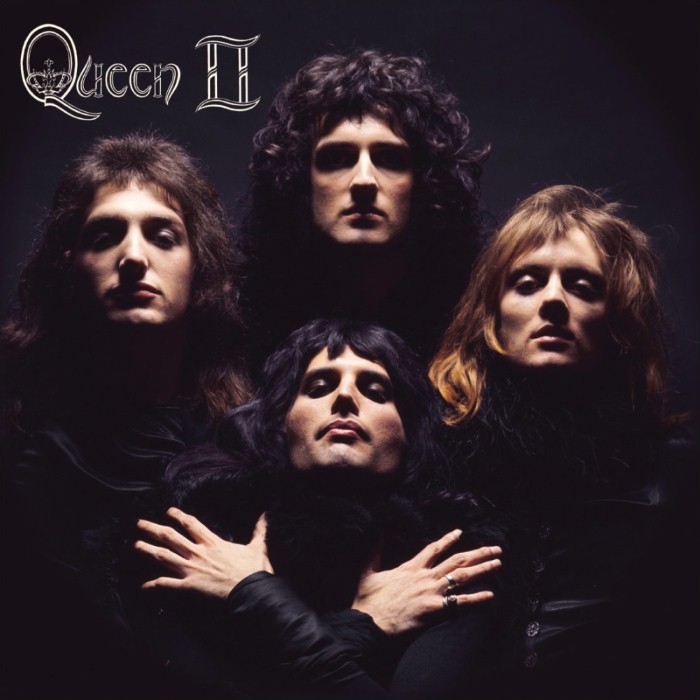Queen II by Queen

Queen II is the second album by British rock group Queen, released in March 1974. It was recorded at Trident Studios, London in August 1973 with co-producers Roy Thomas Baker and Robin Cable, and engineered by Mike Stone. The two sides of the original LP were labelled "Side White" and "Side Black" (instead of the conventional sides "1" and "2"), with corresponding photos of the band dressed in white or in black on either side of the record's label face. It is also a concept album, with the white side having songs with a more emotional theme and the black side almost entirely about fantasy, often with quite dark themes. Mick Rock's album cover photograph was frequently re-used by the band throughout its career, most notably in the music video for the song "Bohemian Rhapsody" (1975). Released to an initially mixed critical reception, Queen II remains one of the band's lesser-known albums. Nonetheless, the album has retained a cult following since its release, has garnered praise from musicians such as Axl Rose, Steve Vai and Billy Corgan, and is significant in being the first album to contain elements of the band's signature sound of multi layered overdubs, vocal harmonies, and varied musical styles
Queen’s self-titled 1973 debut album wades up to the waist—but <i>Queen II</i> dives in head-first. The layers are denser (“The Fairy Feller’s Master-Stroke”), the structures are trickier and more exploratory (“The March of the Black Queen”) and the overall attack is both stronger and more flamboyant. Released in 1974, <i>Queen II</i> was too light to be heavy metal (“White Queen (As It Began)”) and too heavy to be glam (“Seven Seas of Rhye”). But its weird mix of power and frilliness captured the essence of both. Drummer Roger Taylor would later claim the band members recorded so many overdubs on <i>Queen II</i>, they wore the oxide off the tape; it’s the art-rock equivalent of a fisherman holding up his prize-winning catch with a grin on his face and the weight printed proudly underneath. And the band members had plenty to brag about when it came to <i>Queen II</i>. If the album’s choral vocals and baroque flourishes of guitar sound indulgent, note with awe the disclaimer pointing out that “nobody played synthesiser”—a purist’s reminder that no matter how complex things got, Queen was still, above all, a rock band. And compared to the band’s coolly received debut effort, <i>Queen II</i> was a success, making noise on the album charts in both the UK and the US. (Freddie Mercury even quit his job selling second-hand clothes in Kensington Market, in order to make time to tour.) As Brian May later noted, <i>Queen II</i> certainly wasn’t a perfect album—but it <i>was</i> the single biggest step the band ever took.
